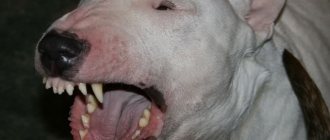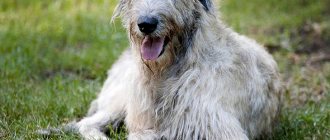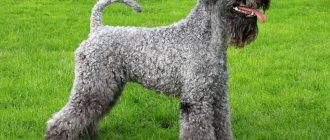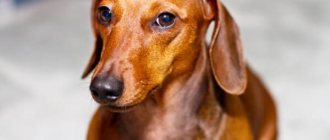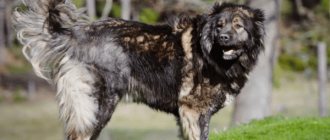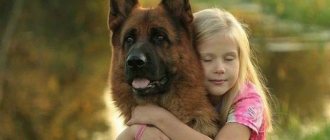Factors affecting Chihuahua life expectancy
- Place of detention - apartment or country house. The environment in large cities suffers from the abundance of vehicles and waste from industrial enterprises. Living in a country house has a beneficial effect on health. But Chihuahuas suffer from hypothermia, and the risk of catching a cold on the street is higher. For owners of a private house, it is necessary to build a special enclosure on their plot.
- Weight is a characteristic that affects lifespan. The greater the deviation from the standard norm of 1.5-3 kg, the shorter the dog’s life. This is not the case for mini Chihuahuas, which live about five years.
- Physical activity is necessary for the harmonious development and life of a pet. Outdoor walks and active games are required. You shouldn't put too much stress on your dog. For large breeds, a harness is used for loading; for small breeds, simple walks with a leash are sufficient.
- Past illnesses and medical interventions. The quality of medical care can affect a dog's life expectancy. Timely vaccination and regular visits to the veterinarian will become the foundation for a long life for the animal.
- Number of pregnancies. Female Chihuahuas, due to the characteristics of the breed, experience childbirth painfully. This is due to rapid sexual development. Bitches that give birth frequently usually live no longer than eight years.
- Gender of the dog. Statistics show that female dogs live longer. How long Chihuahuas live at home is affected by sterilization of the pet. This operation helps to avoid cancer of the reproductive organs.
- Care - quality nutrition, proper training. Miniature dogs are more finicky than their larger companions. You need to monitor the dog’s diet, the condition of its coat and teeth.
How long do Chihuahuas live at home?
On average, these wonderful four-legged friends of humans live from 15 to 18 years. However, the world knows of cases where representatives of this breed lived up to 20 years. It is noteworthy that females live 1–3 years longer than males.
Important! Such a miniature sissy will not be able to survive in street conditions. Therefore, we are talking only about those individuals who are kept in home care and comfort.
Want to know the age of your Chihuahua? Look at his teeth. The dumber a dog’s fangs and incisors are, the older he is. Also, the gray hair visible in the fur will tell you that the pet is quite old. An older pet is no longer as active as a puppy. He may eat poorly, sleep constantly and have certain health problems.
@three_chihuas_b.oh
Increased longevity
Genetic factors do not influence a dog's life as much as the attitude of the breeder. It is important to regularly monitor the condition of the animal.
Take the Attention Test! Find 10 differences! (click right here!)
Find the answer Are you bothered by some problem or question? Enter “Breed” or “Name of the problem” into the form, press Enter and you will find out everything about the issue that interests you.
Some tips for feeding your Chihuahua:
- A dog's diet depends on its owner and his preferences. The choice of dry food or regular food is up to you. If you choose dry food, then it should be premium food.
- Chihuahuas are prone to food allergies, so this breed has a contraindication to overfeeding and restrictions on food categories.
- You should not include in your pet's diet foods containing sugar and salt, chocolate, legumes, pasta, carbonated/alcoholic drinks, and milk.
Not only the diet, but also the appearance of a pet can affect its longevity. The coat of an adult dog or puppy is prone to matting. She requires care:
- Regular brushing;
- Shampooing at least once every 2 months;
- Drying, and if required, using a hair dryer.
In addition to physical health, the pet must be in good mental condition. Stress causes fatal diseases and premature death of the dog. And a lack of socialization can have a bad effect on hormonal levels.
How to extend the life of a Chihuahua?
Strictly speaking, a dog will not live longer than nature has determined, but it is in your power to prevent its premature death. To do this, you need to understand how to properly keep a Chihuahua at home and what points are most important for it:
- Study your pedigree. Before purchasing, find out everything about the parents of the puppy you like, possible hereditary pathologies, and also be sure to obtain all the data on the pet’s health. Some breeders deliberately withhold this information in order to get rid of a sick puppy.
- Visit your veterinarian regularly. The Chihuahua is in good health and rarely gets sick, but it requires frequent vaccinations, especially if you walk the dog or have other animals in the house that go outside. Infectious diseases are one of the most common causes of early death in Chihuahuas.
- Do not leave your Chihuahua in direct sunlight for long periods of time. Thermoregulation in these animals is not perfect, so overheating has a bad effect on their health.
- During the cold season, do not walk your dog, but in the fall and spring, dress it before going outside. Chihuahuas do not like low temperatures, wind and other adverse weather conditions. Just like drafts in the apartment: your pet can easily catch a cold.
- Use high quality dry food. It is not recommended to feed this breed “from the table”, as this greatly shortens its lifespan. In addition, Chihuahuas should have 3-4 meals, but in small portions: the breed often suffers from a sharp drop in sugar levels.
- Protect your dog from injury. Make sure that nothing in the house could accidentally fall on the Chihuahua, and also do not allow the animal to jump from a height (even from a chair): the bones of the breed are quite fragile.
- Brush your teeth. Chihuahuas can suffer from tartar, which can lead to tooth loss as early as 2-3 years of age. It is advisable to do cleaning at least once a week.
- Don't leave your Chihuahua alone. This breed needs constant communication, the deficiency of which affects the mental state. These dogs are very playful and love to be held. The only thing is that during games they can scratch or bite if they suddenly feel threatened.
- Walk only on a leash. This is especially true for male dogs, who don’t mind running around with other dogs, but also getting into fights.
Even if the breeder did not say anything about the health of the animal, some points can be understood... by the color. Chihuahuas with merle hair are rarely recognized, since such dogs often have pathologies of vision and hearing, bone development, heart problems and even reproductive system problems. For this reason, it is better to choose officially approved breed varieties. A curled tail, spinal deformity, and flat chest can also affect health.
Causes of premature death of a dog
Accidents, poisoning, and existing pathologies of internal organs lead to the sudden death of animals. Negative consequences are difficult to predict, however, it is preferable to know what potential dangers threaten your pet.
Common causes of premature canine death:
- poisoning;
- heart disease;
- pneumothorax;
- tracheal collapse;
- congenital abnormalities;
- expansion, volvulus of the stomach;
- ulcer;
- splenic tumor rupture;
- foreign body entering the throat;
- heatstroke;
- injury.
Dogs often suffer from poisons intended for rodents, poisons distributed to exterminate stray dogs. During a walk, be sure to keep an eye on your pet; if the dog does not respond to the command “ugh,” put on a closed muzzle so that the dog does not try questionable “food.”
Heart diseases can manifest asymptomatically, but if a young dog gets tired quickly, is weak, or is breathing heavily, you need to visit a veterinarian for a diagnostic examination.
Air accumulation in the peripulmonary space (pneumothorax) occurs due to injuries to the sternum leading to damage to the emphysematous bladder or existing tumor on the lung.
Tracheal collapse is more common in small breeds, is expressed by a sharp cough after active mobility or the manifestation of strong emotions, and sometimes occurs as a complication of past infections.
A congenital pathology that leads to tragic consequences is the displacement of the cervical vertebrae as a result of insufficient development or defect of the ligaments. An accidental jolt to the problem area can cause pressure on the spinal cord and be fatal.
Gastric dilatation and volvulus are more common in older dogs; both pathologies interfere with the normal blood supply to other organs and are considered deadly. Prevention of stomach problems is considered to be proper nutrition, adherence to a feeding regime and moderate exercise.
The premature death of the animal is caused by complications of peptic ulcer disease, expressed in the formation of a through hole in the wall of the stomach or bleeding. A precaution is the proper nutrition of your pet.
New growths on the spleen (benign and malignant) are susceptible to rupture, which can lead to fatal loss of blood. Tumor rupture is possible even with minor damage caused by difficult bowel movements or increased physical activity.
Swallowing a foreign object risks suffocation or injury to internal organs as the swallowed object moves inside.
Heatstroke is caused by severe overheating of the body and often occurs in dogs locked in a car in hot weather.
A dog can be injured on the street (being hit by a car, fighting with other dogs, etc.), at home (falling from a height, electric shock, etc.), the danger of injury depends on the degree of its severity and the provision of first aid.
Caring for an older dog
At home, an elderly pet should be provided with:
- balanced food, following the feeding regimen;
- monitoring the animal’s body weight and well-being;
- maintaining hygiene (grooming, cleaning the mouth, eyes, ears, trimming nails);
- prevention against parasites;
- moderate physical activity.
Regular preventive examinations of the dog at the veterinarian will help identify diseases and age-related changes in the body, promptly take appropriate measures to treat emerging diseases and alleviate the pet’s condition.
Factors influencing lifespan
The life expectancy of dogs is influenced by factors:
- Physical development;
- Does the animal perform loads appropriate for its age and breed;
- Complete rest;
- A balanced diet enriched with nutrients;
- Sufficient communication and attention.
All these quality indicators of life depend 100% on the owner. The way he takes care of his pet shapes the animal’s resistance to stress and various diseases.
A balanced diet from birth lays the foundation for the pet’s physical health for the rest of its life and even into old age. An older dog should be fed soft food to avoid problems with teeth and swallowing.
In old age, animals can suffer from various diseases, most often deteriorating hearing, vision, and disruptions in the urinary system.
Another problem that can significantly reduce the age of any animal is excess weight. Its excess has a bad effect on the pet’s health, affecting the cardiovascular system and bone structure. It is necessary to control the weight of the animal, especially in old age.
Regular medical examinations, vaccinations, timely contacting a veterinary clinic in case of problems - this is what will keep your pet in the right shape. Constantly caring for your pet throughout its life can significantly increase its cycle.
How long do purebred animals live?
According to veterinary experts, there is a clear relationship between the breed and the years measured to the animal. It has been scientifically proven that the smaller the dog, the longer its life.
The vitality of representatives of different breeds varies. This is due to human breeding activities. When developing standards, dogs develop and reinforce features that are often unnatural.
Breeding a breed is fraught with complications, which are expressed in hereditary diseases:
- Chihuahua. These cute little creatures are genetically prone to medial dislocations of the kneecaps, elbow joints, and various dysplasias.
- Dachshund. Natural hunters, with a funny long body on short legs, pay with health for such a body structure. Hereditary pathology in dachshunds is intervertebral disc disease.
- Shar-Pei. Not only in this breed of dog, but in all pets with skin folds, the disease entropion, which is essentially an entropion of the eyelid, is common.
- Rottweilers. Strong, brave, fearless, smart. But they are also susceptible to hereditary diseases - aortic stenosis, Rottweiler leukoencephalopathy, follicular lipidosis.
- Pikines. This ancient breed is distinguished by a special eye structure, for which it suffers from a tendency to eversion of the eyelids, cataracts, and corneal ulcers.
Each breed has its own Achilles heel - dogs with flat faces have problems with the respiratory system, with skin without fur - they suffer from allergies, large pets are often diagnosed with diseases of the joints and bones.
Breeders allow for different situations that affect the life expectancy of dogs:
- Inbreeding;
- Exclusion of the factor of natural selection;
- The appearance of the offspring becomes a priority, not health;
- The lifespan of the progenitors of the offspring is not taken into account.
Dogs of breeds that are less susceptible to selection changes, of medium size, without any special appearance, live the longest. These are terriers, shepherds, huskies.
The presence of long-livers in the family is of great importance. If the pet's parents lived to a ripe old age, then it has every chance of a long life. If we talk about numbers, on average, dogs live about 12 years.
History of the Chihuahua
The ancestors of the breed are considered to be the ancient Techichi , information about which dates back to 1550 BC. According to them, the Mayans, Tolkecs and Aztecs revered the Techichi as sacred animals .
Long-haired individuals appeared first, and when they were crossed with the Chinese Crested Dog, a rat hunter, short-haired individuals appeared. According to the surviving data, these dogs had all the features and characteristics of a modern Chihuahua.
Miniature dogs with a calm character have gained popularity among tourists from Europe. Traveling to the shores of North America, they acquired these babies with a variety of colors and coat lengths.
The breed quickly spread across the European continent and already in 1904 its representative was included in an exhibition held in Philadelphia. And in 1923, the first National Club was formed and the breed standard was described. In 1949, the British Club was created and, in collaboration with American dog handlers, a new standard was being developed, dividing the breed into long-haired and smooth-haired Chihuahuas.
This breed came to Russia in 1959 as a gift given by Fidel Castro to Nikita Sergeevich Khrushchev. These were two dogs of the long-haired variety, with an excellent pedigree, which were commonly called Mishter and Mushinka.





